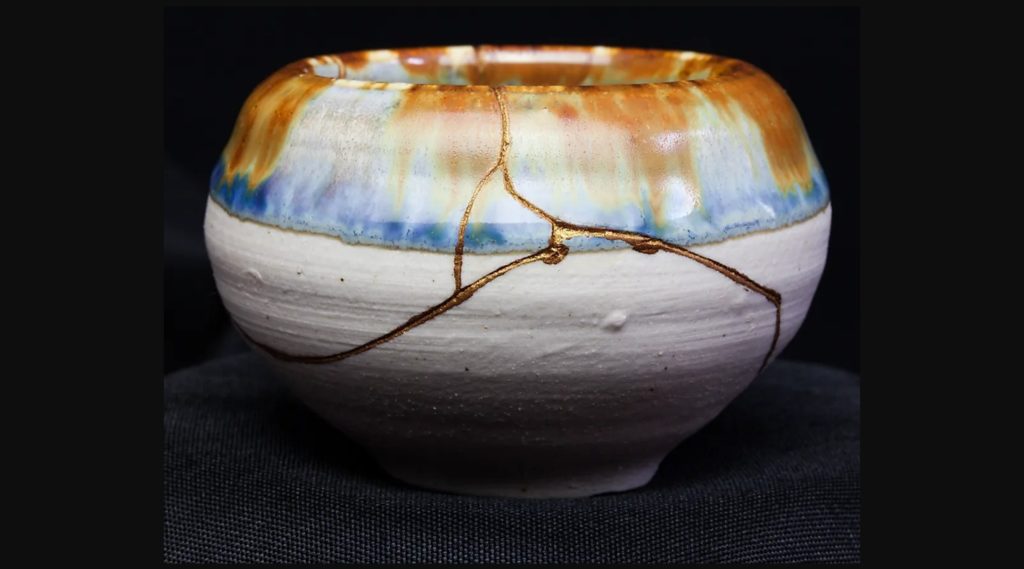The Kintsugi of the Soul

The Beauty in Brokenness: A Reflection on the Cross and the Kintsugi of the Soul
The cross, for many, evokes images of rugged wood, cruel nails, and physical suffering. But the true “ugliness” of the cross goes beyond its physical structure—it is the shame, vulnerability, and degradation it symbolizes. In **Isaiah 53:3**, the prophet describes the Messiah as “despised and rejected by mankind, a man of suffering, and familiar with pain.” Jesus, the holy and beautiful Son of God, was subjected to the ultimate symbol of disgrace: crucifixion. The cross was reserved for criminals, and yet here was the Creator of the universe, stripped naked, beaten, and displayed for all to mock. The horror wasn’t in the cross’s ruggedness but in the profound paradox, it presented—a powerful and holy God appearing utterly powerless and vulnerable.
Jacob, a name I chose to call a trainee to reflect the biblical story of masking and pretense, was trapped in a pattern of hiding behind achievements. Like his namesake, who covered himself in animal skin to deceive his father, this modern Jacob had perfected the art of disguising his authentic self beneath layers of success and accomplishment. His fear of being fully known for his brokenness originated in childhood when he witnessed his mother’s descent into alcoholism. As a young boy, he would kneel beside his bed each night, pleading with God to restore his mother to the loving, vibrant woman she once was. Only later did he realize that even these earnest prayers revealed his deep-seated belief that love could exist only in perfection—that, like Esau’s birthright, it had to be earned through performance.
The weight of this deception followed him into adulthood. When his church offered him a position of greater responsibility, the facade began to crack. One evening, alone in his study, Jacob found himself literally on the floor, wrestling like his biblical namesake—not with an angel, but with the reality of his own perceived fraudulence. His success, meant to mask his wounds, had become the very thing that exposed his deepest fear: that beneath his carefully constructed image, he was unworthy of his calling.
Jacob’s childhood prayers reflected his belief that brokenness and vulnerability were unworthy of love, and this belief followed him into adulthood. He feared that if others truly saw him—his flaws, weaknesses, and failures—he would be rejected. His self-image was tied to shame, much like the shame Jesus bore on the cross.
But the Kintsugi process, where broken pottery is repaired with gold, revealed something new to Jacob. The cracks that once symbolized weakness were transformed into places of beauty and strength. At that moment, Jacob understood that just as the cracks in the pottery were filled with gold, his brokenness could be redeemed. He realized that his fear of being exposed was unfounded, for in Christ’s ultimate vulnerability on the cross, Jesus already bore the shame and ugliness he feared.
Looking again at the cross, Jacob saw the more profound meaning: Christ’s love is not limited by beauty or perfection. Jesus, in His most broken and vulnerable state, showed that love is most powerful amid shame and brokenness. The cross was not a place where God removed humanity’s ugliness; it was where He entered into it and transformed it.
This revelation shattered Jacob’s fear of being fully known. Just as the Kintsugi process turned the cracks in the pottery into something beautiful, the scars in Jacob’s life no longer represented shame but grace. The cross teaches us that love isn’t about hiding our brokenness but embracing it, for it is through those cracks that God’s love and beauty shine the brightest.
The beauty of the cross is found in its ugliness—the shame and brokenness that Christ bore for us all. Jacob’s journey through the Kintsugi process mirrored this truth, as he learned that love is not about being flawless but about being fully known and still deeply embraced. In the end, both the cross and Kintsugi reveal the same profound truth: that the cracks in our lives, when touched by grace, become the very places where God’s love and beauty are most powerfully revealed.
